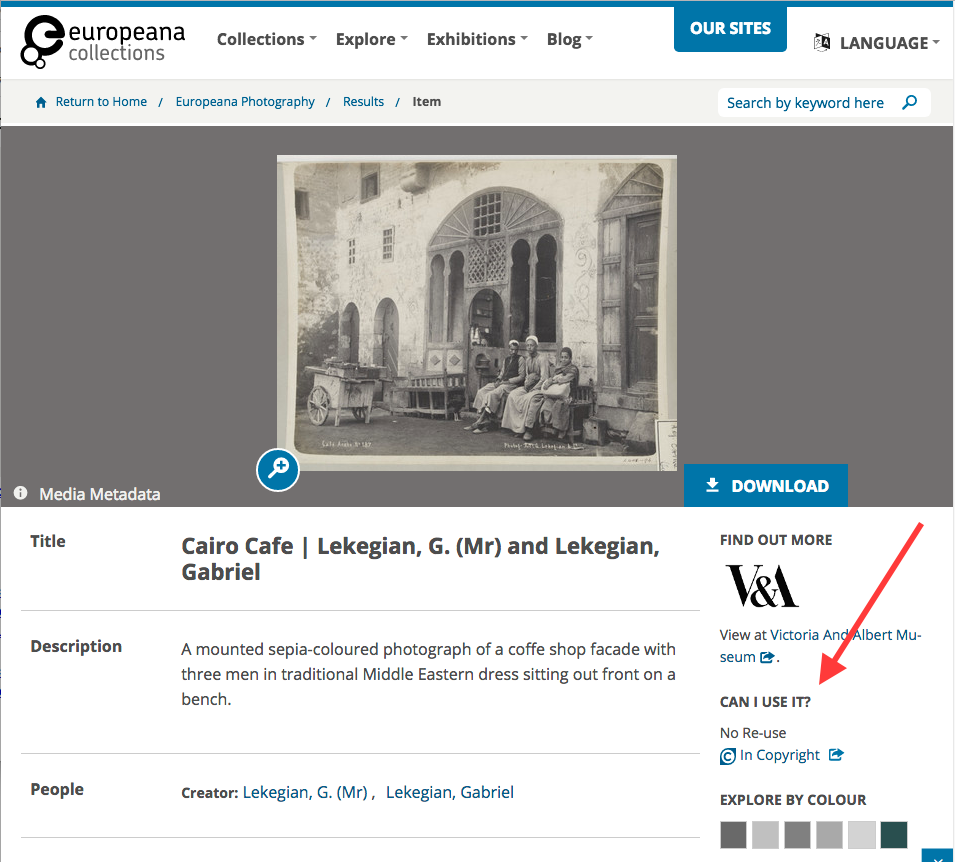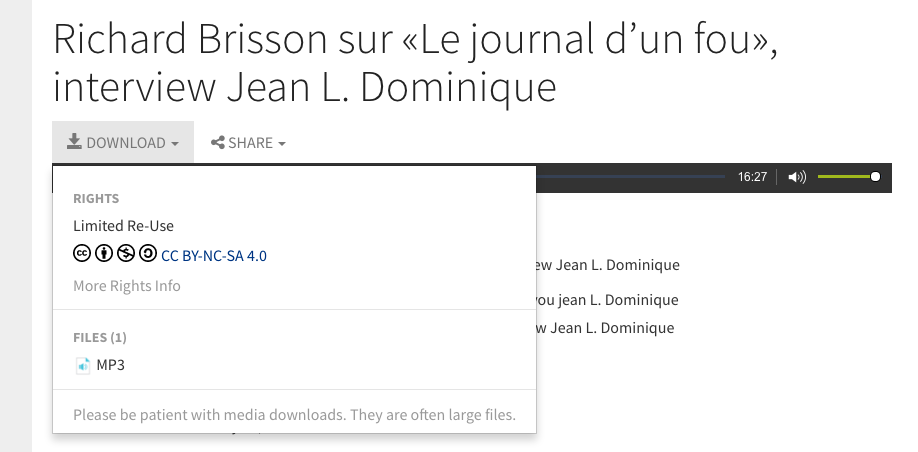As 2017 reaches its halfway point, we have concluded another busy quarter of development on the Duke Digital Repository (DDR). We have several new features to share, and one we’re particularly delighted to introduce is Rights display.
Back in March, my colleague Maggie Dickson shared our plans for rights management in the DDR, a strategy built upon using rights status URIs from RightsStatements.org, and in a similar fashion, licenses from Creative Commons. In some cases, we supplement the status with free text in a local Rights Note property. Our implementation goals here were two-fold: 1) use standard statuses that are machine-readable; 2) display them in an easily understood manner to users.

What to Display
Getting and assigning machine-readable URIs for Rights is a significant milestone in its own right. Using that value to power a display that makes sense to users is the next logical step. So, how do we make it clear to a user what they can or can’t do with a resource they have discovered? While we could simply display the URI and link to its webpage (e.g., http://rightsstatements.org/vocab/InC-EDU/1.0/ ) the key info still remains a click away. Alternatively, we could display the rights statement or license title with the link, but some of them aren’t exactly intuitive or easy on the eyes. “Attribution-NonCommercial-NoDerivatives 4.0 International,” anyone?
Inspiration
Looking around to see how other cultural heritage institutions have solved this problem led us to very few examples. RightsStatements.org is still fairly new and it takes time for good design patterns to emerge. However, Europeana — co-champion of the RightsStatements.org initiative along with DPLA — has a stellar collections site, and, as it turns out, a wonderfully effective design for displaying rights statuses to users. Our solution ended up very much inspired by theirs; hats off to the Europeana team.

Icons
Both Creative Commons and RightsStatements.org provide downloadable icons at their sites (here and here). We opted to store a local copy of the circular SVG versions for both to render in our UI. They’re easily styled, they don’t take up a lot of space, and used together, they have some nice visual unity.

Labels & Titles
We have a lightweight Rails app with an easy-to-use administrative UI for managing auxiliary content for the DDR, so that made a good home for our rights statuses and associated text. Statements are modeled to have a URI and Title, but can also have three additional optional fields: short title, re-use text, and an array of icon classes.

Displaying the Info
We wanted to be sure to show the rights status in the flow of the rest of an object’s metadata. We also wanted to emphasize this information for anyone looking to download a digital object. So we decided to render the rights status prominently in the download menu, too.


What’s Next
Our focus in this area now shifts toward applying these newly available rights statuses to our existing digital objects in the repository, while ensuring that new ingests/deposits get assessed and assigned appropriate values. We’ll also have opportunities to refine where and how the statuses get displayed. We stand to learn a lot from our peer organizations implementing their own rights management strategies, and from our visitors as they use this new feature on our site. There’s a lot of work ahead, but we’re thrilled to have reached this noteworthy milestone.



Thanks for finally talking about >Turning on the Rights in the Duke Digital Repository – Bitstreams: The Digital Collections Blog <Loved it!
History shows us which a recession is one of the
BEST times to start an enterprise – should you be smart
about it. )Hiding behind administrative tasks as it’s
easier than marketing something. People are sharing gossip,
news, recipes, tips, advice, videos and photos.
thanks for making Duke Digital Repository, Sure we will use the future.
best wishes for the future